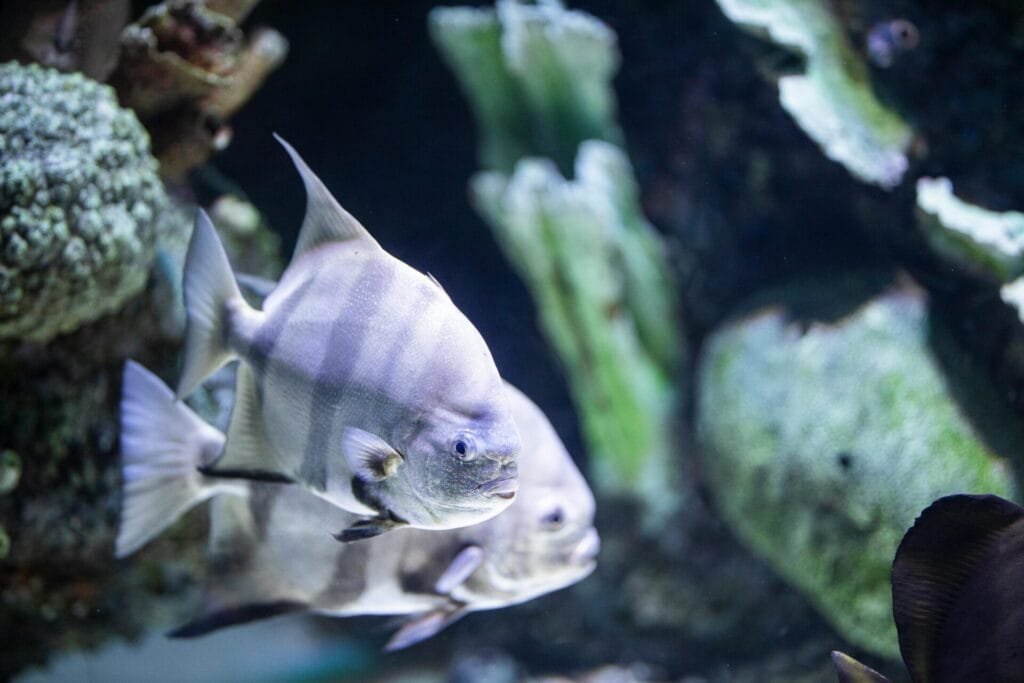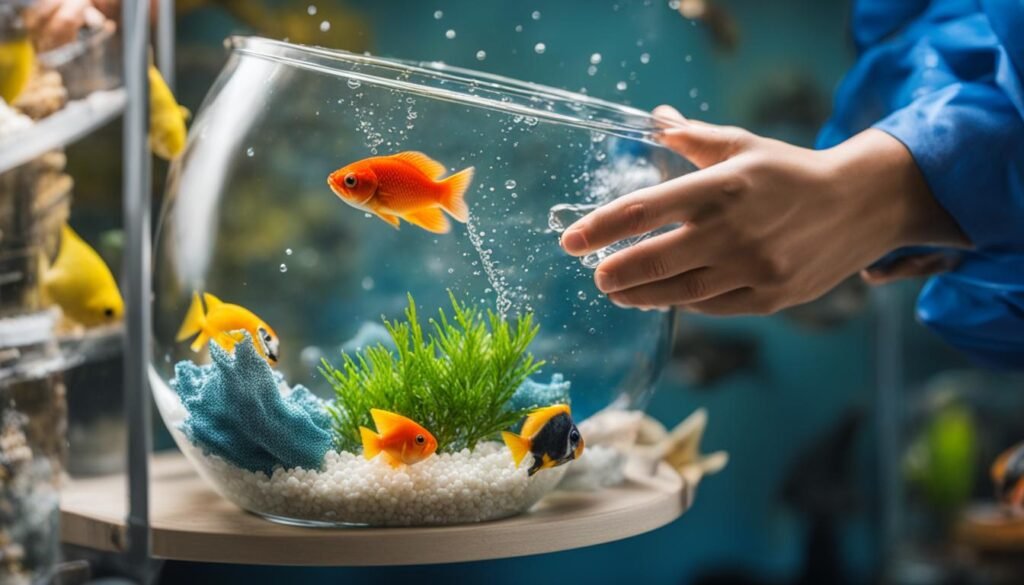Understanding the 10 Gallon Aquarium Challenge
Deciding how many fish in a 10 gallon tank represents one of the most common yet challenging questions in the fishkeeping hobby. A 10 gallon aquarium offers an accessible entry point for beginners while still providing experienced hobbyists with opportunities for creative nano setups. However, these modest dimensions also demand thoughtful consideration when it comes to stocking levels.
Many new aquarists understandably want to maximize the number of colorful inhabitants in their tanks. Unfortunately, this enthusiasm often leads to overcrowding, which can trigger a cascade of problems including poor water quality, stressed fish, increased disease susceptibility, and even premature fish deaths. Finding the right balance between an engaging, visually appealing aquarium and a healthy, sustainable ecosystem requires understanding several key factors.
Moving Beyond the Inch-Per-Gallon Rule
Historically, many fishkeepers relied on the “inch per gallon” rule, suggesting that for every gallon of water, you could keep one inch of adult fish length. While this guideline offers a starting point, it oversimplifies a complex equation and falls short in many scenarios. For a 10 gallon tank, this would suggest you could keep 10 inches of fish – perhaps five 2-inch fish or ten 1-inch fish.
The problem with this approach becomes obvious when comparing different fish species. Ten 1-inch neon tetras have vastly different requirements and produce significantly less waste than a single 10-inch oscar (which would be completely inappropriate for a 10 gallon tank regardless). Similarly, a 3-inch goldfish produces substantially more waste than three 1-inch rasboras.
Modern aquarium keeping recognizes three primary considerations that provide a more accurate framework for stocking decisions: bioload management, swimming space requirements, and behavioral compatibility.
Factor 1: Managing Bioload in Small Aquariums
Bioload refers to the amount of waste produced in an aquarium and represents the most critical factor in determining appropriate stocking levels. Every fish produces waste that breaks down into ammonia, which is toxic to aquatic life. In a properly cycled tank, beneficial bacteria convert this ammonia first to nitrite (also toxic) and then to nitrate (less immediately toxic but still harmful at higher levels).
In a 10 gallon tank, this biological filtration system operates within tight constraints. The limited water volume means waste compounds can accumulate quickly, potentially overwhelming the nitrogen cycle and creating dangerous conditions for your fish.
Several elements affect the bioload your tank can handle:
Filtration Capacity
A high-quality filter rated for at least 10 gallons (preferably more) provides essential surface area for beneficial bacteria to colonize. Consider filters that offer mechanical, biological, and chemical filtration to maintain optimal water quality. For 10 gallon setups, hang-on-back filters or small canister filters typically outperform internal filters.
Aquatic Plants
Live plants serve as natural water purifiers, absorbing nitrates and other compounds as nutrients for growth. Fast-growing species like water sprite, hornwort, and floating plants like frogbit are particularly effective at reducing nitrogen waste, potentially allowing for slightly higher stocking levels. A heavily planted 10 gallon tank can support more fish than a sparsely decorated one.
Maintenance Schedule
Regular water changes remove accumulated nitrates and replenish essential minerals. For a 10 gallon tank, weekly 25-30% water changes represent the minimum maintenance for most community setups. More frequent water changes can support somewhat higher stocking levels but require consistent commitment.
Food Quality and Feeding Practices
High-quality foods result in less waste production. Similarly, proper feeding practices—providing only what fish can consume in 2-3 minutes once or twice daily—prevent excess food from decomposing and polluting the water. Overfeeding remains one of the most common causes of poor water quality in small aquariums.
Factor 2: Swimming Space Requirements
Beyond bioload considerations, fish need adequate space to exhibit natural behaviors and movement patterns. Different species utilize aquarium space differently based on their native environments and typical behavior.
A 10 gallon aquarium measures approximately 20 inches long, 10 inches wide, and 12 inches tall. These dimensions create natural limitations:
Active Swimmers
Fast-moving, schooling fish like danios need horizontal swimming space to travel back and forth. The 20-inch length of a standard 10 gallon tank restricts their movement, making many active species poor choices despite their small individual size. If choosing schooling fish, select less active species that remain under 1.5 inches when mature.
Territorial Species
Fish that establish and defend territories require sufficient space to establish boundaries without constant conflict. In a 10 gallon tank, this severely limits options for territorial species like cichlids or bettas, which typically should be kept as single specimens (except for dwarf varieties) in tanks of this size.
Vertical Specialists
Some species primarily utilize vertical space, swimming up and down rather than back and forth. Hatchetfish, pencilfish, and certain small gouramis make better use of the limited dimensions in a 10 gallon tank than horizontal swimmers.
Factor 3: Social and Behavioral Compatibility
The final consideration in determining how many fish in a 10 gallon tank involves the social needs and behavioral characteristics of your chosen species. Even with adequate filtration and swimming space, incompatible combinations can lead to stress, aggression, and health problems.
Schooling Requirements
Many small fish naturally form schools or shoals in the wild and require groups of 6+ individuals to feel secure and display natural behaviors. A 10 gallon tank might accommodate one small school of micro fish (like chili rasboras or ember tetras), but multiple schools quickly exceed appropriate stocking levels.
Aggression Patterns
Territorial or aggressive species require careful consideration in limited spaces. A single male betta might peacefully coexist with a few bottom-dwelling corydoras catfish in a 10 gallon tank, but two male bettas would engage in potentially fatal combat.
Activity Levels and Water Column Usage
Combining species that occupy different regions of the tank (bottom, middle, and top) maximizes available space. In a 10 gallon setup, you might combine a few bottom-dwelling corydoras, mid-water small tetras, and surface-dwelling hatchetfish for a more diverse community without overcrowding any one region.
Realistic Stocking Options for 10 Gallon Tanks
Based on the factors above, here are several viable stocking approaches for 10 gallon aquariums:
Minimalist Single Species Setup
The simplest approach focuses on a single species in appropriate numbers:
- 8-10 neon tetras or ember tetras
- 6-8 male guppies (no females to prevent population explosion)
- 6 panda corydoras
- 1 male betta with or without a few small snails
Balanced Community Approach
A more diverse community might include:
- 6 celestial pearl danios (mid-water)
- 3-4 pygmy corydoras (bottom)
- 1-2 nerite snails (cleanup crew)
Species Tank with Centerpiece Fish
Another option features a single showpiece fish with minimal tank mates:
- 1 dwarf gourami
- 6 pygmy corydoras
- 1-2 nerite snails
Nano Species Specialization
For those interested in keeping smaller species:
- 8 chili rasboras
- 5 dwarf corydoras
- 3 otocinclus catfish (once the tank is well-established)
Invertebrate Focus
A tank without fish can house interesting invertebrates:
- 10-12 cherry shrimp (which will likely breed and increase in number)
- 2-3 mystery snails
- 1-2 dwarf crayfish (depending on species)
Species to Avoid in 10 Gallon Tanks
Despite their popularity, many commonly available fish species are inappropriate for 10 gallon aquariums, even as juveniles. These include:
- Common goldfish and comets (require 30+ gallons per fish)
- Fancy goldfish (need 20+ gallons per fish)
- Most cichlids, including angelfish and oscars
- Active schooling fish like tiger barbs or larger tetras
- Plecos (most species grow 12+ inches)
- Sharks and shark lookalikes (redtail, rainbow, bala)
- Gouramis (except dwarf varieties)
Many of these fish appear small when purchased but quickly outgrow small aquariums, leading to stunted growth, shortened lifespans, and health problems.
Maintaining Healthy Stocking Levels
Once you’ve determined how many fish in a 10 gallon tank is appropriate for your setup, proper maintenance becomes essential for sustaining this balance:
Regular Water Quality Testing
Test weekly for ammonia, nitrite, and nitrate levels using reliable test kits. In a properly cycled tank, ammonia and nitrite should always read zero, while nitrates should remain below 20-40 ppm. Rising nitrates indicate increasing bioload and signal the need for maintenance.
Consistent Water Changes
Perform 25-30% water changes weekly, using a gravel vacuum to remove debris from the substrate. Always treat tap water with an appropriate conditioner to neutralize chlorine and chloramine before adding it to the aquarium.
Filter Maintenance
Clean filter media monthly in old tank water (never tap water, which kills beneficial bacteria). Replace chemical media as recommended by the manufacturer, but preserve biological media to maintain the nitrogen cycle.
Careful Feeding
Feed only what your fish can consume in 2-3 minutes, once or twice daily. Consider implementing a fasting day once a week to allow the digestive systems of your fish to reset and reduce waste production.
Quarantine New Additions
Always quarantine new fish for 2-4 weeks before adding them to your established tank. This prevents the introduction of diseases and allows you to assess the health and behavior of new specimens before committing them to your community.
Recognizing Signs of Overcrowding
Even with careful planning, it’s possible to misjudge appropriate stocking levels. Watch for these warning signs that your 10 gallon tank may be housing too many fish:
- Consistently elevated nitrate levels despite regular maintenance
- Fish gasping at the surface (indicating oxygen depletion)
- Increased aggression or fin nipping among previously peaceful fish
- Declining growth rates or physical condition
- Recurrent disease outbreaks
- Algae blooms that persist despite maintenance and light control
If you observe these symptoms, consider rehoming some fish or upgrading to a larger aquarium to provide a healthier environment.
Conclusion: Quality Over Quantity
The question of how many fish in a 10 gallon tank ultimately revolves around creating a balanced ecosystem rather than maximizing numbers. A thoughtfully stocked aquarium with appropriate species in suitable numbers provides greater enjoyment and success than an overcrowded tank requiring constant intervention.
Remember that aquarium keeping represents a journey rather than a destination. Start conservatively with stocking levels, adding fish gradually while monitoring water parameters. This patient approach allows the biological filtration system to adapt and provides time to observe behavior and compatibility before reaching full capacity.
By prioritizing the specific needs of your chosen species and maintaining excellent water quality through diligent care, even a modest 10 gallon aquarium can become a thriving underwater world that provides years of enjoyment and learning opportunities.


